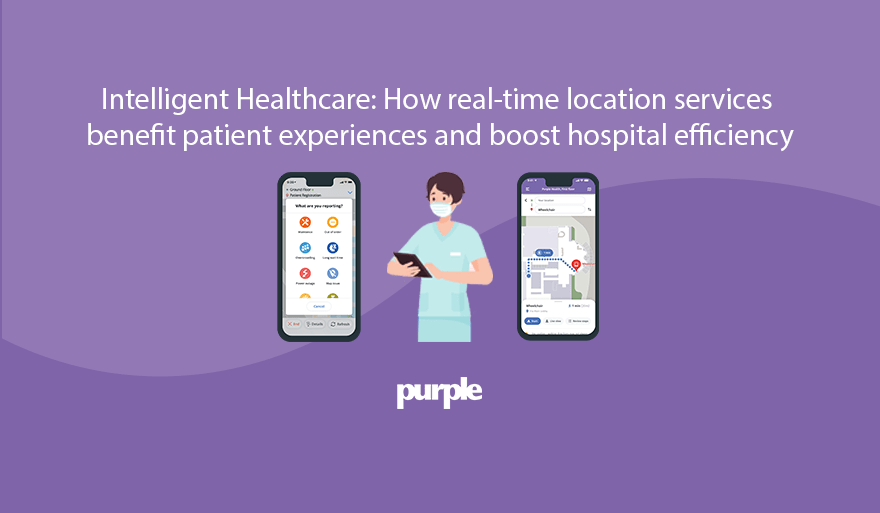95% of hospitals are planning to increase their utilization of real-time locating technology. By implementing additional solutions, healthcare facilities will be enabled to track medical devices, supplies, and specimens.
What is Intelligent Healthcare?
When we think about the future of healthcare, it’s exciting and mysterious. What will a trip to the hospital look like? Will drones deliver prescriptions? And how will internal operations be affected?
While Intelligent Healthcare is a reasonably new term it is simply the adoption of leading artificial intelligence solutions to improve and optimize all aspects of healthcare venues. As healthcare continually evolves the possibilities for improvement are endless.
What are Real-time Location Services?
Real-time location services are used by organizations to improve different aspects of their operations, for example, internal operations, visitor experiences, and staff efficiency. The technology used by real-time location services to achieve these ambitions can range from sensor-based tracking to radio frequency tags, and even consumer devices, which in most cases will be mobile phones.
A variety of interfaces can be used to present different sources of information to the relevant individuals. Important operational assets will be visible to business administrators, whereas directions to navigate a hospital will be presented to patients and members of staff.
In this blog, we are going to focus on two forms of RTLS: Asset Tracking, and Digital Wayfinding.
The issues with Traditional Healthcare
Despite intelligent healthcare being an inevitable requirement for healthcare operators to survive and thrive in the long run, adoption is a steady process. However, it’s essential to highlight the issues facilities will continue to face if progress isn’t made.
The majority of us at some point have had a poor healthcare experience. Whether it be a lack of communication, struggling to get to the relevant facility on time, or getting lost in the endless maze of corridors.
- Technology downtime – 96% of hospitals said they experienced one downtime in the past 3 years (equalling a loss of approx $8662 per minute)
- Slow to care – 40 hours a month per nurse are being lost looking for equipment resulting in over $1m of estimated time being spent looking for medical assets per year
- Wasted pharmaceuticals – $800 million is the combined annual cost for hospitals across the United States due to lost pharmaceuticals (approx. $200,000 per hospital each year)
- Inefficient practices – Only 42% of expensive medical equipment in hospitals is utilized
- Poor experiences – 30% of first-time visitors get lost and confused in hospitals
- Untraceable theft – 7-8% of assets that go missing in healthcare facilities are thefts
For the many hospitals that manage and sometimes manufacture pharmaceuticals, there are restrictions on the location insights available due to the technology being utilized, which more often than not is barcodes and a manual scanner.
Despite having the ability to scan assets at dedicated checkpoints, for example, packaging rooms, distribution, and eventually stock rooms, there is a black hole of knowledge during transit. The unavoidable truth with this method is healthcare facilities don’t know if something is missing until it’s too late, resulting in additional losses and delayed patient care.
Intelligent Healthcare benefits of Real-time Location Services
Gartner projects: “the indoor location services market to reach $55 billion revenue by 2030, up from $1.9 billion in 2021, with asset tracking the largest market opportunity”
The traditional healthcare environment is one that is set to continually waste money, stay inefficient, and will continue to underdeliver the experience patients and visitors deserve. But how can this change?
Let’s take a look at the operational benefits available for healthcare facilities that adopt real-time location services.
Benefit 1 – Better care for eloped patients
How does it work? Asset Tracking & Digital Wayfinding
6/10 of people with Alzheimer’s or Dementia will wander during their stay at a healthcare facility, and reacting to this flight risk quickly is key to maintaining patient safety.
Purple’s Asset Tracking notifies the relevant staff when a patient wanders using a combination of wearable tags, predetermined geo-zones, as well as tools to track and find patients quickly. Having this solution in place means staff members are better equipped to manage critical situations and provide a greater level of care for the most vulnerable patients.
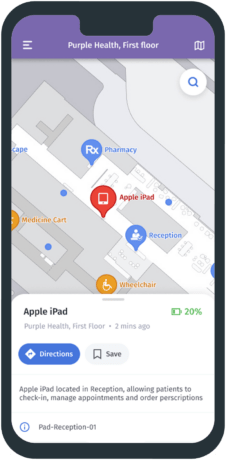
Benefit 2 – Prevent misplacement and theft
How does it work? Asset Tracking
The financial impact seen each year in healthcare due to the misplacement and theft of medication must be a priority for global healthcare organizations.
With Purple’s asset tracking solution, workplace staff is enabled to track medication in transit with real-time location insights. Additionally, automatic alerts can notify employees when medication reaches relevant checkpoints such as storage as well as notify administrators if it leaves the relevant area, further preventing the chances of theft or misplacement.
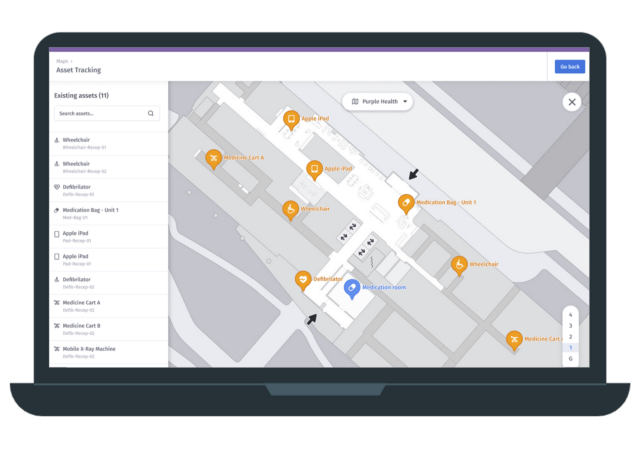
Benefit 3 – Locate large assets
How does it work? Asset Tracking
The average asset usage in healthcare is 35%, with 10-20% of a hospital’s inventory going missing or being misplaced every year. Purple’s Asset Tracking allows healthcare facilities to track and find assets, as well as set up notifications if they leave a predefined location.
Asset loss can result in $4000 – $5000 worth of equipment missing per bed per year. In 2015, the Santa Clara Valley Medical Center in San Jose, CA, reported 383 items missing from 2010 to 2014, valued at more than $11 million.
This in turn allows for greater asset management care, as well as utilization, reducing overall waste and cost directly impacting the 90% increase in cost per hospital bed in recent years to combat loss of assets.
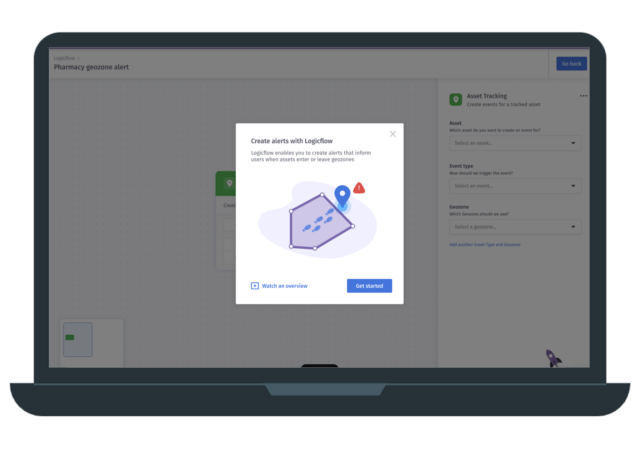
Benefit 4 – Alerts and directions for critical assets
How does it work? Asset Tracking & Digital Wayfinding
Nurses spend 1 hour per shift searching for critical pieces of equipment, with 16% of searches ending in failure. Purple Asset Tracking enables healthcare facilities to know where critical equipment is at all times, provide directions to its location, and notify the relevant members of staff when it leaves a predetermined geo-zone.
From this, healthcare staff is able to quickly locate what they need, save potentially lost time, and provide a quality experience for patients.
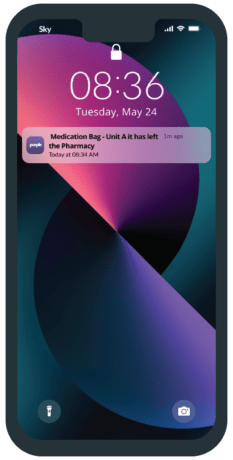
Improving patient experiences with Real-time Location Services
Without patients, hospitals and healthcare facilities are just dormant labyrinths. Ensuring that a positive and memorable experience for patients is vital to reducing anxieties often attributed to medical appointments, as well as gaining positive feedback through sources such as HCAHPS (Hospital Consumer Assessment of Healthcare Providers and Systems).
Here we’ll take a look at how RTLS can improve patient experiences.
Benefit 1 – Incident resolution
How does it work? Digital Wayfinding
First impressions are a critical element in the selection of a healthcare provider and the experience of a patient, with the reputational impact running into the millions.
With Purple Patient Experience, digital wayfinding provides the ability to report incidents such as spills, and reduce time to resolution by providing directions to the incident. This in turn allows staff to react in a timely manner and resolve any safety issues, and prevent accidents.

Benefit 2 – Appointment discipline
How does it work? Digital Wayfinding
Missed appointments are costing the North American healthcare industry $150 billion every year, with lost patients being a major cause. Purple Patient Experience provides accurate digital navigation, meaning they get to where they need to be on time, reducing lost revenue.
Achieved with Purple’s Digital Wayfinding solution, healthcare providers can see a reduction in late appointments of 10% leading to prolonged savings, and empowered patient experiences.
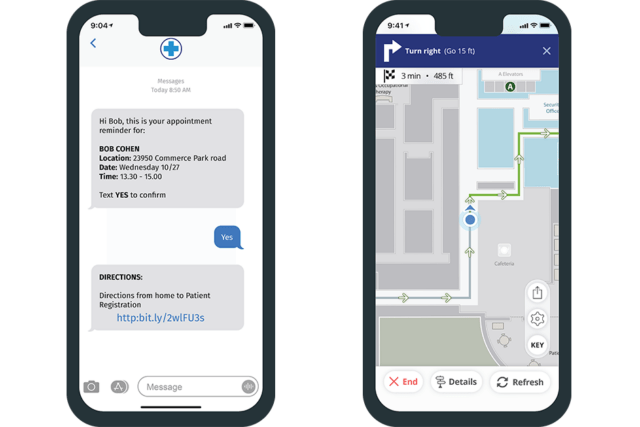
Benefit 3 – Less reliant on staff
How does it work? Digital Wayfinding
30% of patients will get lost in hospitals, and will typically seek help from staff, with an average of 10 minutes of interruptions per hour. Purple Patient Experience provides accurate digital navigation, meaning the facility staff is more focused on providing quality care for patients.
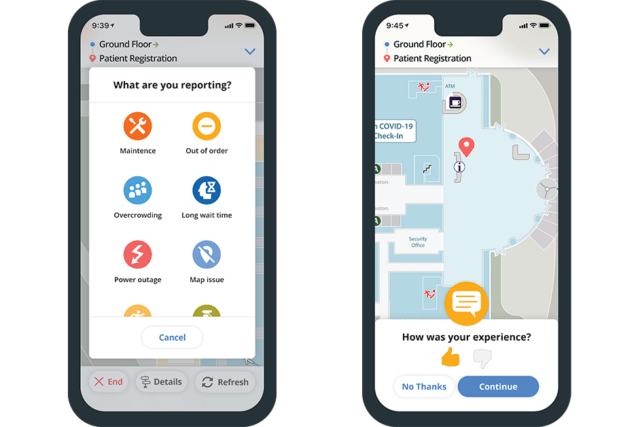
Benefit 4 – From home to the destination
How does it work? Digital Wayfinding
Patients’ experiences are greatly impacted by anxiety, and stress increases if they arrive in the wrong parking garage or get lost during their journey. Purple Patient experience ensures they have the most efficient journey, decreasing stress and improving their experience.
Additionally, digital wayfinding is fully integrated with the most used consumer navigation applications such as Uber, Google Maps, Lyft, and much more to provide a complete navigation experience from anywhere to the desired healthcare facility and back!
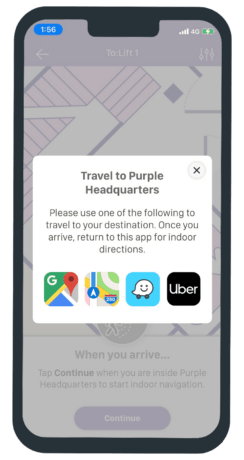
Improving workforce efficiency of Real-time Location Services
Workforce efficiency is vital to the success of providing a quality healthcare experience, not only for patients but also for staff. In this section we’re going to look at the benefits healthcare workforces can reap from real-time location services and Purple’s solutions.
Benefit 1 – Building evolution (change and scale over time)
How does it work? Digital Wayfinding
Hospital designs and layouts are constantly changing, especially with the introduction of new buildings which leads to staff confusion and inefficiencies. Purple Staff Efficiency provides the healthcare workforce with accurate and up-to-date wayfinding via a secure login experience leading to increased efficiency and staff satisfaction.
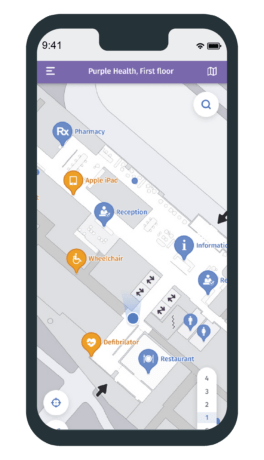
Benefit 2 – Existing staff
How does it work? Digital wayfinding
Just like new and temporary staff, the existing workforce must be provided with the tools necessary to deliver a great patient experience. Purple Staff Efficiency provides staff with the ability to accurately direct visitors and patients that may not be able to do it themselves.
Digital Wayfinding enables staff to find the quickest route for patients in need as well as navigate to incident reports to hastily resolve and prevent any safety issues.
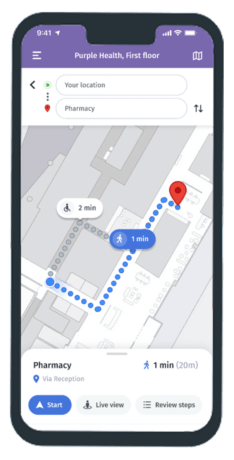
Benefit 3 – New member of staff
How does it work? Asset Tracking & Digital Wayfinding
The healthcare industry in the US is expected to add an additional 2.6 million jobs in the next 10 years. Purple Staff Efficiency provides staff with the tools to successfully orient themselves in their new environments, get up to speed with the facility operations, and begin delivering the best possible care for patients.
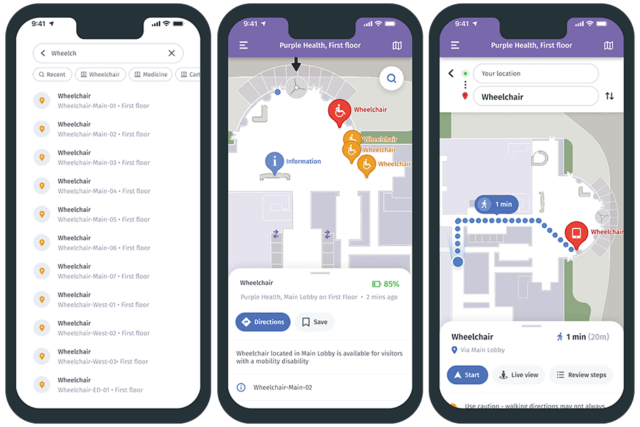
Benefit 4 – Consultant (shared staff)
How does it work? Asset Tracking & Digital Wayfinding
96 percent of healthcare facilities hired temporary health professionals in 2021. Temporary staff is more likely to get lost, reducing efficiency, and the ability to provide a great level of care for patients.
Purple Staff Efficiency provides temporary staff with up-to-date directions enabling them to find their way and deliver immediate value for operational efficiency and patient experiences.
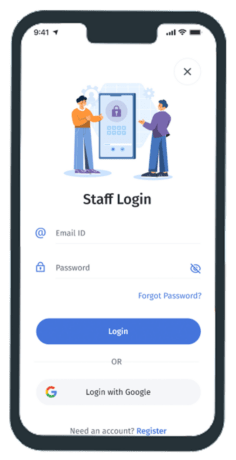
It’s time to act. The future of Intelligent Healthcare is now!
Now that we’ve seen the benefits of real-time location services vs the cost of doing nothing, adopting a form of RTLS is not an option for healthcare facilities but a requirement for long-term survival.
The monetary losses of traditional healthcare alone must become a driving force to take a deeper look at the ways in which facilities can be improved. Purple’s Intelligent Healthcare solutions enable facilities to achieve new levels of operational capabilities, patient sentiment, and staff efficiency!
Speak to a Purple expert to find out more.
